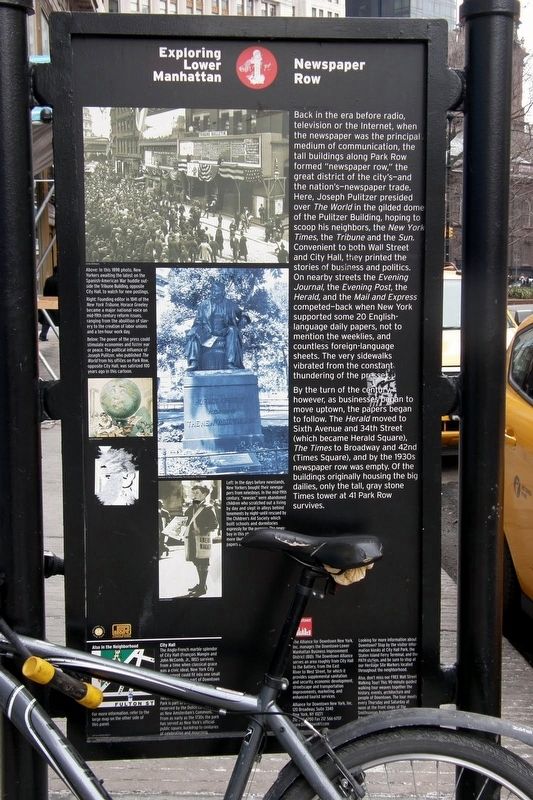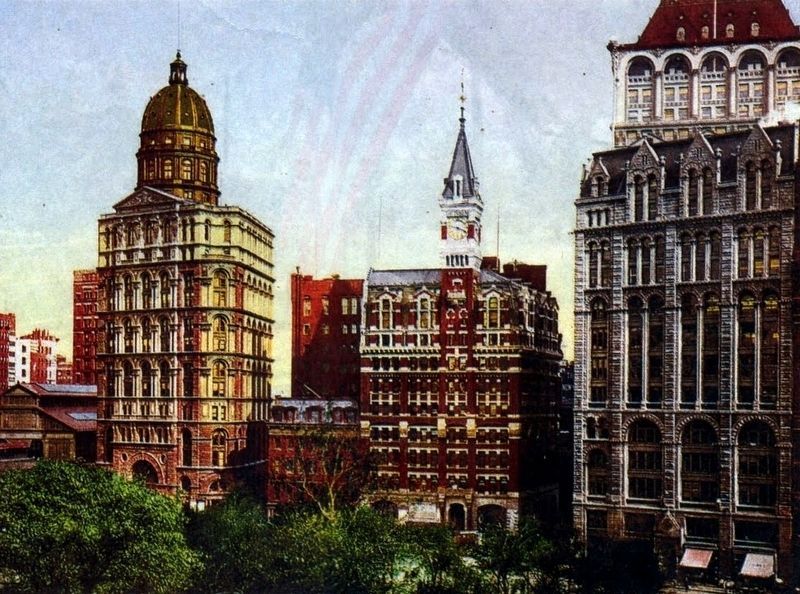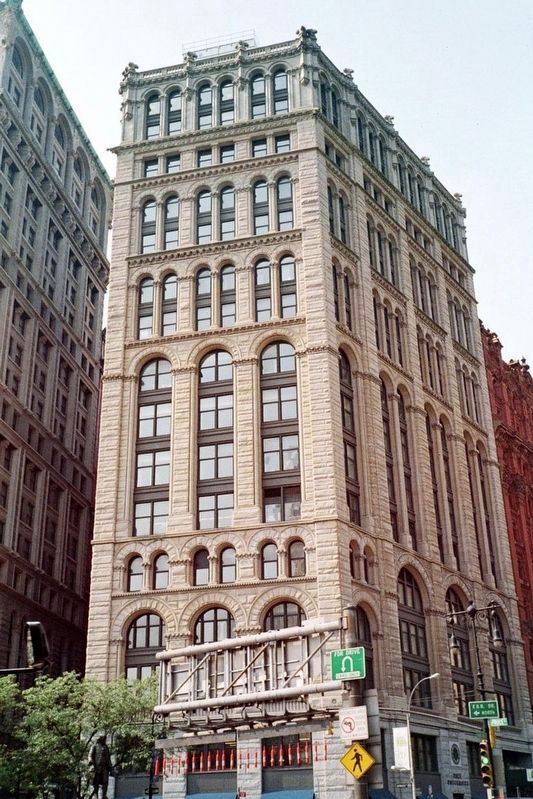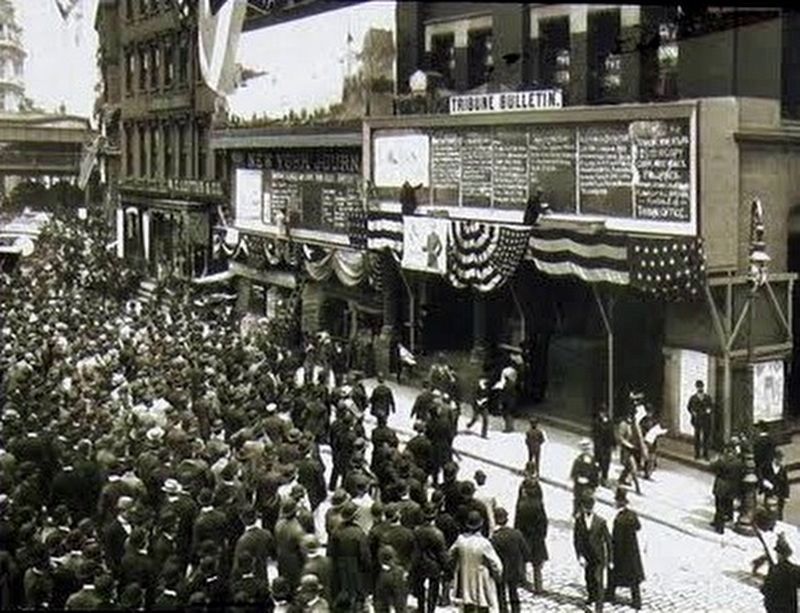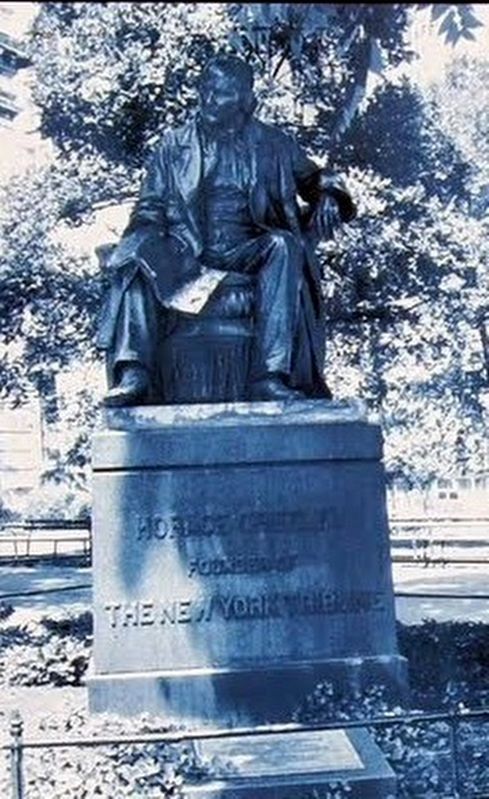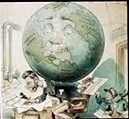Financial District in Manhattan in New York County, New York — The American Northeast (Mid-Atlantic)
Newspaper Row
Exploring Lower Manhattan
Back in the era before radio, television or the Internet, when the newspaper was the principal medium of communication, the tall buildings along Park Row formed “newspaper row,” the great district of the city’s – and the nation’s – newspaper trade. Here, Joseph Pulitzer presided over The World in the gilded dome of the Pulitzer Building, hoping to scoop his neighbors, the New York Times, the Tribune and the Sun. Convenient to both Wall Street and City Hall, they printed the stories of business and politics. On nearby streets the Evening Journal, the Evening Post, the Herald, and the Mail and Express competed – back when New York supported some 20 English-language daily papers, not to mention the weeklies, and countless foreign-language sheets. The very sidewalks vibrated from the constant thundering of the presses.
By the turn of the century however, as businesses began to move uptown, the papers began to follow. The Herald moved to Sixth Avenue and 34th Street (which became Herald Square), The Times to Broadway and 42nd Street (Times Square), and by the 1930s newspaper row was empty. of the buildings originally housing the big dailies, only the tall, gray stone Times tower at 41 Park Row survives.
Erected by Alliance for Downtown New York.
Topics. This historical marker is listed in these topic lists: Communications • Industry & Commerce.
Location. Marker has been reported missing. It was located near 40° 42.711′ N, 74° 0.365′ W. Marker was in Manhattan, New York, in New York County. It was in the Financial District. Marker could be reached from the intersection of Spruce Street and Park Row, on the right when traveling north. Touch for map. Marker was at or near this postal address: Water Street, New York NY 10038, United States of America. Touch for directions.
Other nearby markers. At least 8 other markers are within walking distance of this location. Benjamin Franklin (a few steps from this marker); Pace College (within shouting distance of this marker); New York City Hall (within shouting distance of this marker); Pace University (within shouting distance of this marker); Nathan Hale (within shouting distance of this marker); Mail Street 1875-1939 (about 300 feet away, measured in a direct line); First Underground Railway Excavation (about 300 feet away); Canadian Burr Oak (about 300 feet away). Touch for a list and map of all markers in Manhattan.
More about this marker. The marker probably vanished due to demolition/new construction at the corner lot. This entry is for archival purposes.
Also see . . . The Lost Pulitzer Building -- Nos. 53-63 Park Row. "Daytonian in Manhattan" entry. (Submitted on April 11, 2020, by Larry Gertner of New York, New York.)
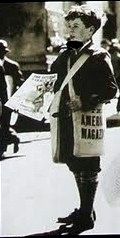
Photographed By Larry Gertner, December 20, 2013
5. Inset
In the days before newsstands, New Yorkers brought their newspapers from newsboys. In the mid-19th century, “newsies” were abandoned children who scratched out a living by day and slept in alleys behind tenements by night – until rescued by the Children’s Aid Society which built schools and dormitories expressly for the purpose.
Credits. This page was last revised on January 31, 2023. It was originally submitted on May 25, 2019, by Larry Gertner of New York, New York. This page has been viewed 211 times since then and 31 times this year. Photos: 1, 2, 3, 4, 5, 6, 7. submitted on May 25, 2019, by Larry Gertner of New York, New York. • Bill Pfingsten was the editor who published this page.
